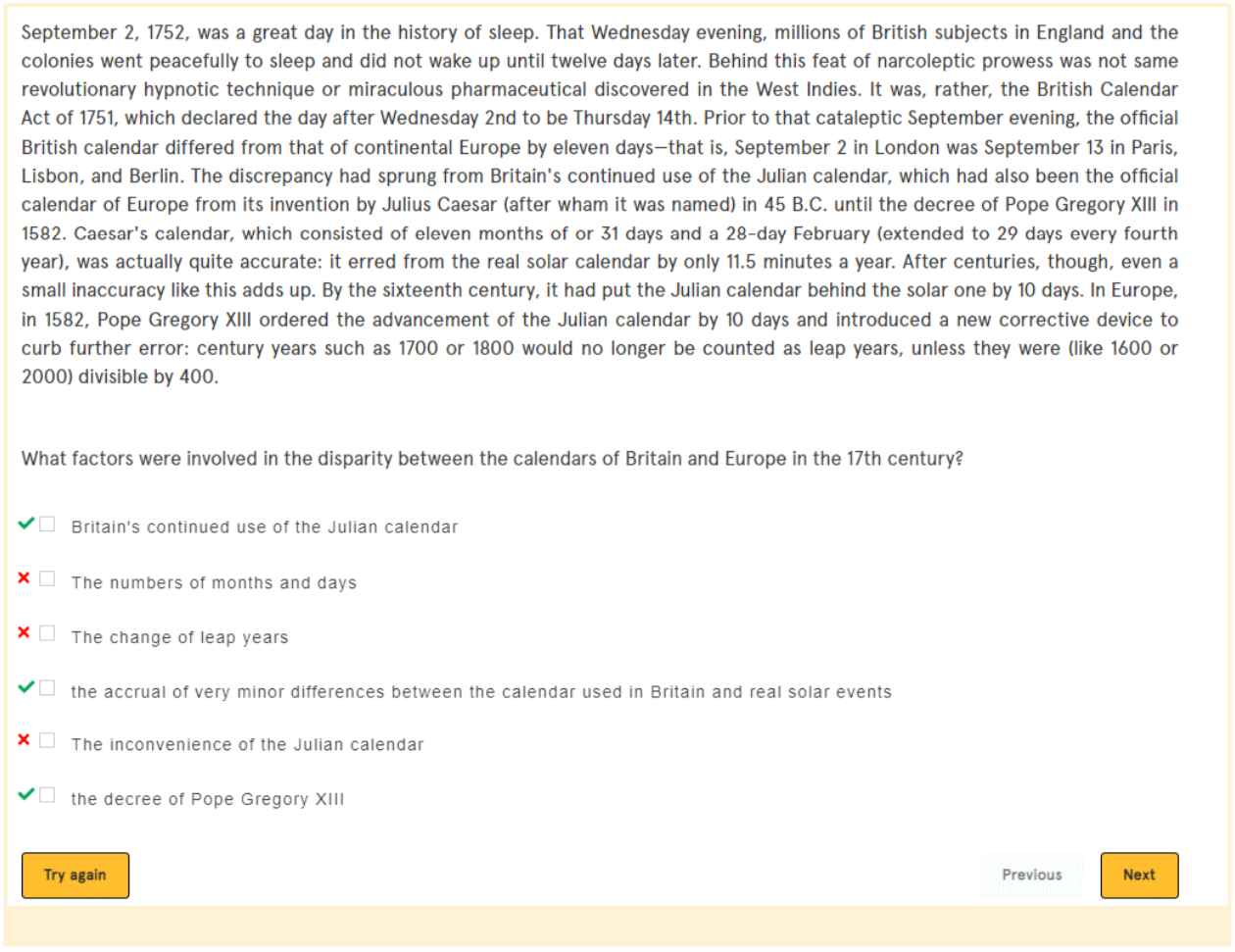No courses in the enrolment list.
As an international English proficiency test, PTE strives to deliver a fair, reliable, and objective assessment process.
The PTE scoring system includes two methods: Correct or Incorrect and Partial Credit.
However, many students have raised some questions about negative marking in PTE. “Does PTE have negative markings?” or “How do negative markings impact my score?“.
If you need clarification about this concept, this post will give you the answers.
|
How to FINALLY Pass the PTE and Achieve Your Dreams
Stop guessing! Start using proven methods that guarantee results!
✅ Master Every Section: Discover INSIDER SECRETS that secure HIGH SCORES. ✅ Save Time & Effort: Study SMARTER with proven strategies for FAST results. ✅ Real Practice, Real Confidence: Practice with TEST-LIKE questions to feel FULLY PREPARED.
START YOUR PTE SUCCESS JOURNEY TODAY
|
Key Takeaways
- The PTE scoring system includes two methods: Correct or Incorrect and Partial Credit.
- Negative markings apply in the PTE reading and listening sections.
- Explore practical examples of negative markings in the PTE exam in detail below.
Don’t miss:
- See how our PTE classes have helped thousands of students achieve their PTE goals!
- Top 10 best PTE preparation tips for higher scores
What is negative marking in PTE?

There is actually no negative marking in the PTE scoring system.
Negative markings come into play for incorrect answers in certain PTE test questions.
When you give a wrong response, you will receive a negative marking, or lose one mark. Nonetheless, the minimum score will be 0.
- Correct answer: 1 Point
- Incorrect answer: -1 Point
- Minimum marks: 0
PTE test takers will be assured they will not lose points.
The PTE uses a partial credit scoring method. This means that you will earn positive scores for the right answer.
There is no deduction for skipping or choosing an incorrect answer. Instead of negative marks, you will get a 0.
Related:
Question types that can have negative marking
Negative markings apply in the PTE reading and listening sections.
Two question types may be awarded a negative mark.
- Multiple Choice, Choose Multiple Answers (Listening).
- Multiple Choice, Choose Multiple Answers (Reading).
- Highlight Incorrect Words (Listening).
Let’s now see how negative marks work!
Multiple Choice, Choose Multiple Answers
This question type has multiple correct responses out of the available options.
Therefore, you will get one plus mark (+1) for selecting the correct response. On the contrary, you will get one negative mark (-1) for selecting the wrong one.
The lowest mark for a single question is 0.
Note:
- There are no negative marks given to the multiple-choice question with a single correct answer.
- Your score will not be below 0 if you make multiple wrong answers in one question.
Highlight Incorrect Words
You will get a recording with its transcription. There are several words in the transcript unmatching with the audio. You have to highlight all the wrong words according to the instructions.
If you mark an accurate word, you will gain one negative mark (-1) on your total score for the question.
The lowest overall score awarded will be 0.
Examples of negative markings in PTE
To further elaborate, we will provide some practical examples of negative markings in the PTE exam.
Example 1: Multiple Choice, Choose Multiple Answers

Options 2, 3, and 5 are incorrect.
Options 1, 4, and 6 are correct.
To get the maximum mark of three (+3), you must choose options 1, 4, and 6.
If you choose options 2(-1), 4(+1), and 6(+1), your total marks will be -1+1+1=1.
If you choose multiple incorrect options, your total marks will be -1. However, you will receive a 0 and NOT -1 since the total score cannot be lower than zero.
Example 2: Highlight Incorrect Words

If the audio says: A complicated plan to cut back Australia’s greenhouse gases.
But the transcript says: A generous plan to cut back Australia’s greenhouse gases.
If you mark the word “generous” as the audio says “complicated”, you will get one mark (+1).
If you mark other words in the text, you will receive one negative mark (-1) on your overall score for the question.
The differences between partial credit and negative marking
For the two question types above, the partial credit scoring system uses negative markings.
Apart from these question types, partial credit works for other question types but does not apply negative markings.
Partial credit without negative marking
- You will gain points for each right response.
- You will not lose points for incorrect or not selected non-selected responses.
Partial credit with negative marking
- You will get points for each correct response.
- You will get negative markings for incorrect answers.
- Negative marking does not apply if you select multiple incorrect answers. The lowest score awarded is 0.
How to avoid negative markings in the PTE exam?
Here are some tips and tricks to help you avoid negative marks and maximize your scores.
Tips for Multiple Choice, Choose Multiple Answers
Although skipping an answer might help you avoid negative marks, this reduces the chance of achieving a higher score.
To receive the highest possible score in this question type, you should choose all the options that you believe are right.
Don’t choose an option if you’re unsure if it’s correct.
Tips for Highlight Incorrect Words
While you may not earn full points for this question type, you may gain credit for several right answers. There is no negative marking for not highlighting 100% of the correct answers.
Conclusion
We hope this post has removed any doubts about a negative marking in PTE.
No worries anymore! You will not lose points for skipping a task or giving wrong answers. All you need to do is make your PTE preparation perfect.
Contact our PTE centre for support now!
|
How to FINALLY Pass the PTE and Achieve Your Dreams
Stop guessing! Start using proven methods that guarantee results!
✅ Master Every Section: Discover INSIDER SECRETS that secure HIGH SCORES. ✅ Save Time & Effort: Study SMARTER with proven strategies for FAST results. ✅ Real Practice, Real Confidence: Practice with TEST-LIKE questions to feel FULLY PREPARED.
START YOUR PTE SUCCESS JOURNEY TODAY
|
Last updated on 10/03/2025

My name is Moni, and I am a seasoned PTE teacher with over 6 years of experience. I have helped thousands of students overcome their struggles and achieve their desired scores. My passion for teaching and dedication to my student’s success drives me to continually improve my teaching methods and provide the best possible support. Join me on this journey toward PTE success!


























I am a firm believer that the best teachers educate with their hearts not just their minds.
Moni | PTE MAGIC International Founder
Explore PTE
Tips & Tricks
If you’re planning to move to Australia, this checklist for moving to Australia as an...
Read more →Which is the best English test for Australian immigration? This blog will explain the importance...
Read more →How to find a job in Australia as an international student? This blog by PTE...
Read more →